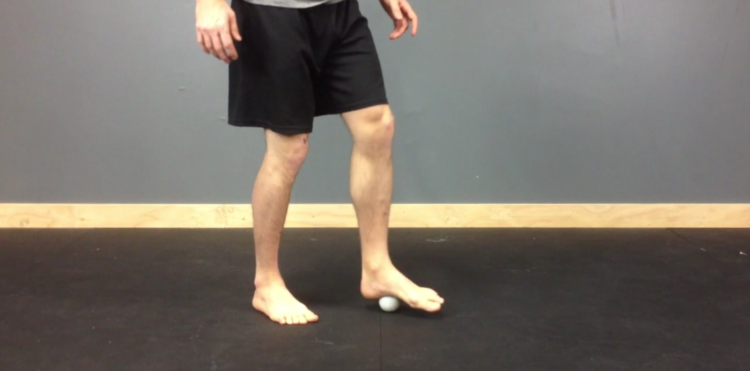This may sound crazy… bear with me….
The cure for your back pain may be in your foot.
As a life by design chiropractor, I’m always on the lookout for the Core Problems that create dysfunction in the body.
And one thing I’ve learned in the process of helping hundreds of families get their health on track is that YOUR problem isn’t always THE problem. Kinda like how if you step on a dog’s tail, it barks, but that doesn’t mean the problem is its mouth.
Your body is made up of many different tissue types.
One of these types of tissue is called FASCIA.
Fascia operates as a kind of sheath, covering the surface of muscles and nerves to allow them to move and glide freely over one another without constantly getting stuck. It’s a clever invention of the body to allow multiple muscles and tissues to overlie each other, making movements like running, throwing and jumping not only efficient but possible.
The fascia also flows together and connect tissues together in a kind of ‘soft skeleton’ structure.
In this way, the base of your skull is actually directly connected to your big toe.
Due to these connections, the cause of your back pain may actually be in your foot.
You’re probably aware of the concept of compensation – like having to work harder to cover for a lazy colleague in your office. When fascia in your foot becomes tight, scarred and full of adhesions, the result is often that other regions have to pick up the slack. Now, under the excess strain from covering your lazy foot, the fascia covering your lower back starts to give you pain.
There’s research to back this up too.
A recent study published in the Journal of Bodywork and Movement Therapies demonstrated an immediate improvement in hamstring and lower back mobility after simply rolling a tennis ball under the sole of the foot.
This principle applies to all of the fascia in the body.
That’s why a fundamental part of the recommendations we give our patients is soft tissue mobility… and it’s not only important that you do the exercises regularly, but hopefully now you understand why it’s so important that you also mobilize the tissues that aren’t sore or don’t seem related.
What’s more, improving the health and mobility of ALL of your muscles and fascia will not only help to resolve your secondary problems (insert the pain you’re experiencing here), but in fulfilling your mobility requirements you are actively improving muscular strength, recovery, and power.
A recent article reviewing credible studies fascial mobilization techniques found that fascial mobility exercises improved joint range of motion, muscle stiffness, recovery post-workout, and maximum power output. So whether you have back pain or not, you should be doing this.
How do you mobilize your fascia?
I’m glad you asked… 🙂
Click below for instant access to our 12 minute Soft Tissue Mobility Video to learn how to mobilize your fascia.
There’s so much to gain and nothing to lose. What are you waiting for?
 Dr. David Hawkes is a wellness expert and martial arts enthusiast. Born and raised in Perth, Western Australia, Dr Hawkes’ passion for health and wellness has led him here to Kanata, literally halfway around the world. After graduating from Murdoch University, Dr. Hawkes ran a successful practice in Perth’s western suburbs before moving to Ottawa. Dr. Hawkes has a special interest in family wellness, as well as Peak Performance. He is passionate about helping individuals and families lead their extraordinary lives.
Dr. David Hawkes is a wellness expert and martial arts enthusiast. Born and raised in Perth, Western Australia, Dr Hawkes’ passion for health and wellness has led him here to Kanata, literally halfway around the world. After graduating from Murdoch University, Dr. Hawkes ran a successful practice in Perth’s western suburbs before moving to Ottawa. Dr. Hawkes has a special interest in family wellness, as well as Peak Performance. He is passionate about helping individuals and families lead their extraordinary lives.
